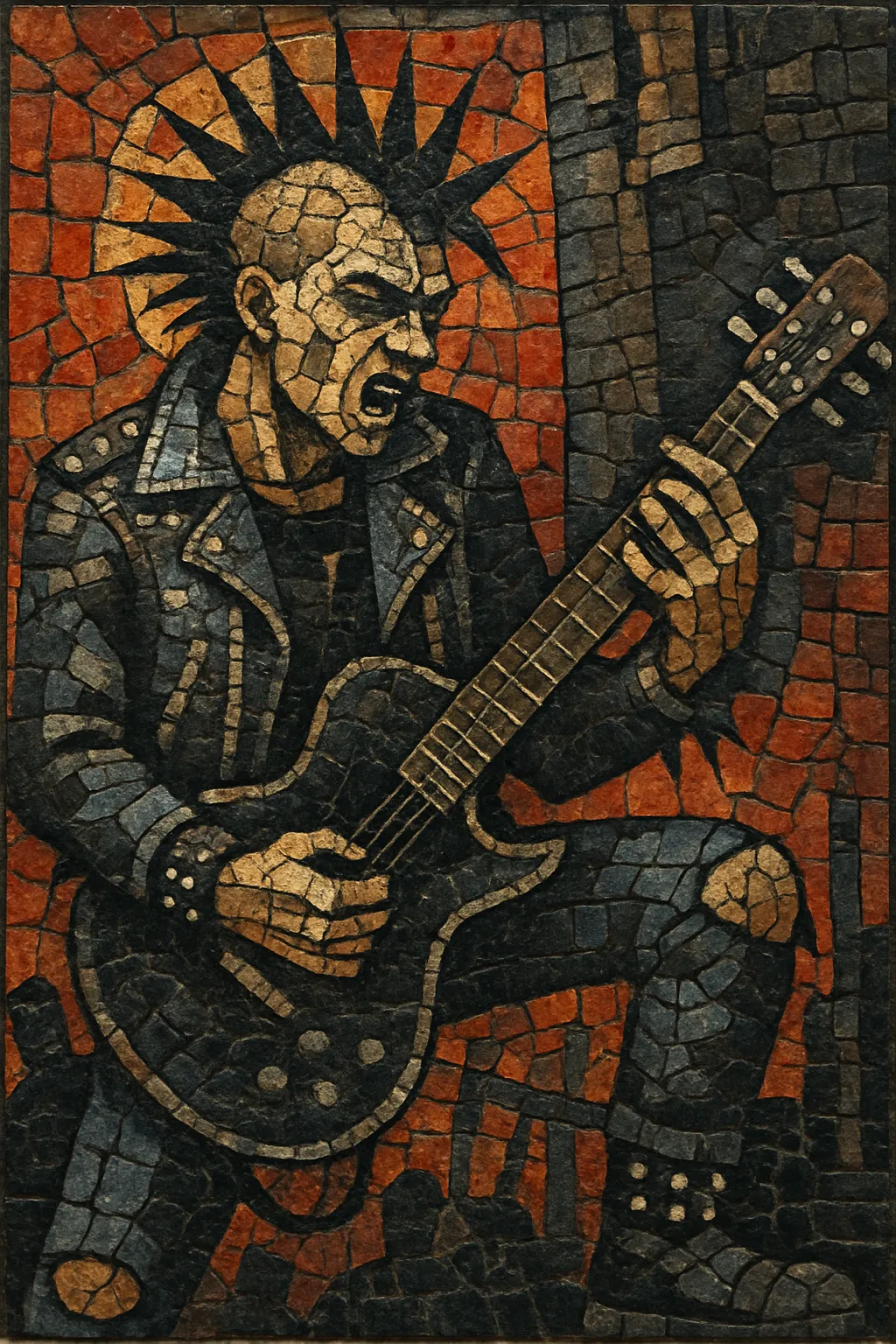
Street punk is a raw, anthemic strain of punk that crystallized among working‑class youth in late 1970s Britain. It prioritizes loud guitars, chant‑along choruses, and direct, socially grounded lyrics over artiness or virtuosity.
Musically, it sticks to fast 4/4 beats, tight down‑stroke power‑chord riffs, and simple, memorable hooks designed for group vocals. Aesthetically it emphasizes a gritty, street‑level identity—leather, denim, studs, spikes—matching songs about daily struggle, anti‑authoritarian sentiment, and community unity.
While it overlaps with Oi!, street punk is often broader and more sonically aggressive, aligning with the UK82 wave and helping bridge first‑wave punk to harder, faster developments in the 1980s.
Street punk emerged in the United Kingdom as punk’s working‑class, street‑level continuation. As the first wave of 1977 punk splintered, bands sought a tougher, more anthemic approach that rejected commercial polish. This aesthetic aligned with local scenes around pubs, football terraces, and youth clubs, where simple, loud, participatory songs thrived.
By the early 1980s the sound coalesced alongside the “UK82” wave—fast tempos, shouted hooks, and a raw, abrasive guitar sound. Groups such as The Exploited, G.B.H., Anti‑Nowhere League, and The Business made records and toured relentlessly, giving the style international visibility. Although closely related to (and often overlapping with) Oi!, street punk leaned even more on speed, distortion, and chant‑along refrains.
After the initial UK surge, scenes blossomed worldwide. In the United States a 1990s revival centered on bands like The Casualties and The Unseen, while Germany produced Oxymoron and Japan fostered acts like The Discocks and other ‘82‑style bands. DIY touring networks, independent labels, and zines sustained the style’s grassroots character.
Street punk remains a live‑driven genre built on camaraderie and catharsis. New bands continue to adopt its spiky look, chanted gang vocals, and socially grounded lyrics, while classic groups maintain enduring audiences. The sound’s directness and energy keep it a gateway into harder punk offshoots and a perennial soundtrack for working‑class identity and anti‑authoritarian sentiment.

